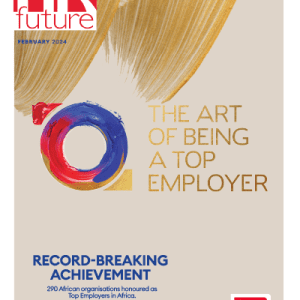All legitimate commercial and charitable entities, whether companies, organisations or associations, have a goal to be successful – in other words, be good at what they do. Their thinking is that, if they are good at what they do, they will become successful in whatever form success takes for them.
But, when one looks closely at different organisations and engages with their employees, one discovers that they’re not necessarily as good as they want to be or claim to be.
Before we consider what makes a company good, we need to ask ourselves what we mean by “good”.
Good may refer to a company’s success in terms of profitability in that they are making a lot of money. This usually happens because they have a focused, productive, committed, engaged and competent workforce. Now that’s quite a mouthful and implies a whole lot of other activities that contribute to what makes the company good.
Take some of these as examples …
If we talk about a competent workforce, we’re implying that the right people were hired and that they have been appropriately and adequately trained. And if we talk about an engaged workforce, we have to assume that the working environment in which they work is a pleasant one, that they are adequately rewarded for their effort and that they are supported in every way to ensure they are engaged.
Now just these two examples involve a whole lot of input. The question is: from whom?
And the obvious answer is: from the company’s leadership!
You see, a company is only as good as its leaders.
Which begs the question: what kind of leaders does your company have?
It might sound like stating the obvious when one says that everything is dependent on your leadership team. But judging by the way some companies are run, it would seem that they don’t place much importance on upskilling their leaders.
When one talks of leaders being trained, one has to be careful not to think only in terms of their technical skills. While it’s very important that leaders are technically competent, that’s. Not. Enough.
Leaders have to be self-aware to understand themselves and the people they lead and manage. This might seem unnecessary to those who are still operating with a fast becoming outdated leadership model. That’s why leaders who lack self-awareness (think Donald Trump) are a massive liability to the companies, organisations or countries they lead.
So, apart from ensuring that your workforce is trained for competence, your main priority is to upskill your leaders – at all levels of the organisation. Back in the heyday of the military model of leadership – the old command and control model – there was no need for internal and external self-awareness. Leaders were given targets which they passed on to those who reported to them and they issued instructions which simply had to be obeyed. That’s it.
My … wasn’t leadership easy in those days?
Today, leaders have to demonstrate empathy (impossible without self-awareness), show vulnerability (an absolute “no no” for command and control leaders) and apply a collaborative approach to getting things done (again, not acceptable with command and control thinking).
If, therefore, your leaders lack self-awareness, empathy, vulnerability and collaborative skills, you’re headed for stormy waters in the near future. They might still be getting away with hanging on to their outdated leadership style but that’s simply not going to last.
Don’t let financial success lull you into a false sense of security (things are going so well, what could possibly go wrong?). If your leaders lack the aforementioned qualities, you’re headed for trouble.
So, to build a good company, you need to make sure your leaders are upskilled to take your company into the future because the future is not the same as the past and the future of your company is determined by the quality of your leaders.
If you need help with upskilling your leaders, talk to me!
Alan Hosking is the Publisher of HR Future magazine, www.hrfuture.net and @HRFuturemag. He is an internationally recognised authority on leadership competencies for the future and teaches experienced and younger business leaders how to lead with empathy, compassion, integrity, purpose and agility. In 2018, he was named by US-based web site Disruptordaily.com as one of the “Top 25 Future of Work Influencers to Follow on Twitter“. In 2020, he was named one of the “Top 200 Global Power Thought Leaders to watch in 2021” by peopleHum in India. In 2022, he has been named on the Power List of the “Top 200 Biggest Voices in Leadership in 2022” by LeaderHum.







